ANN/THE STAR – They came and they conquered – but the invaders have now become the hunted.
The ultra-invasive bandaraya fish are being cleared from the state’s waterways by a group of anglers skilled in net-casting in Selangor.
This fish is named as such in Malaysia because of how it cleans up algae, detritus and leftover food in aquariums, just like the garbage removal service provided by city and municipal councils – thus bandaraya or council garbage service.
Similarly, Indonesians call it ikan sapu-sapu (sweeper fish) and Filipinos call it the “janitor fish”.
Natives of the Amazon River basin, they are members of the armoured catfish family. Yes, they have an armour of thick scales from head to tail that you cannot cut through even with a knife, although their bellies are soft.
They are favourites in the aquarium fish trade because they primarily feed on algae, hence keeping fish tanks clean.
But many aquarium fish keepers do not realise that some species can grow to 50 centimetres long and become violently territorial.
When they become too big, amateur aquarists tend to release them into rivers and lakes – and this is where the ecological disaster starts. These fish can wipe out native fish in the rivers by eating the eggs they lay.
Enter the Komuniti Pemburu Ikan Bandaraya (Bandaraya Fish Hunters Community), founded last October by anglers Mohamad Haziq A Rahman, 36, and Mohd Nur Badri Mat Sidik, 44. This group, with a presence on Facebook, now has about 10,000 members.
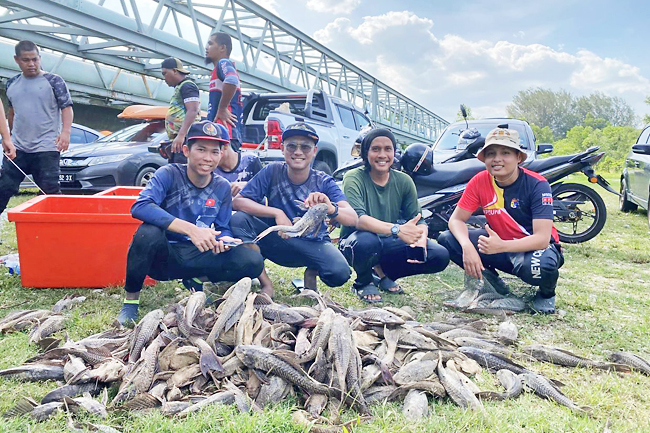
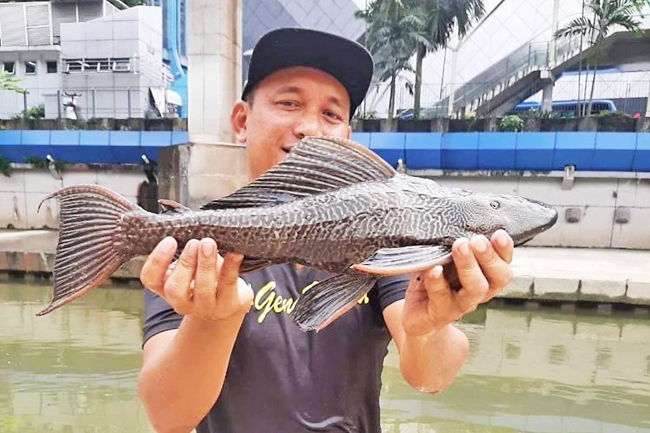
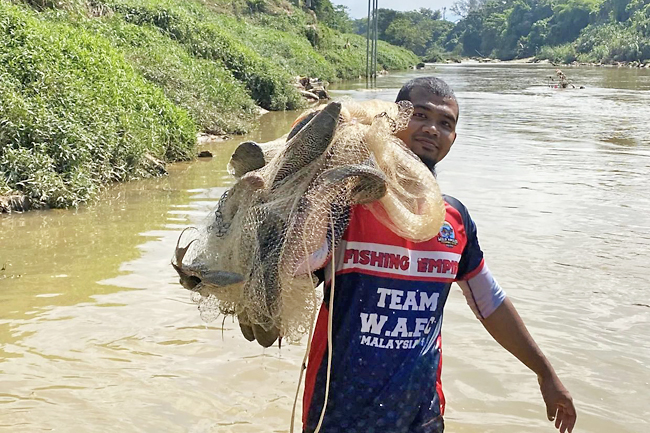
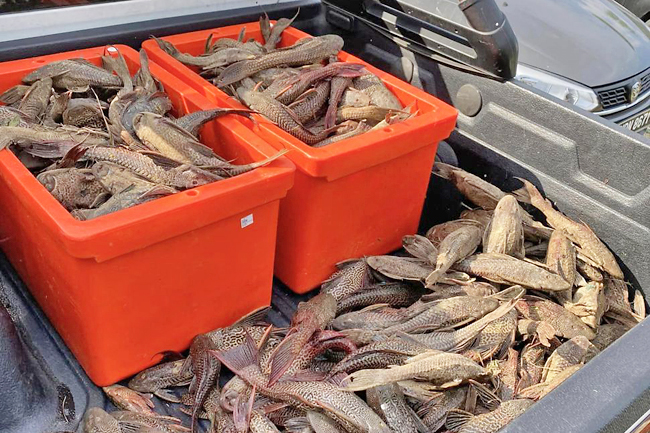
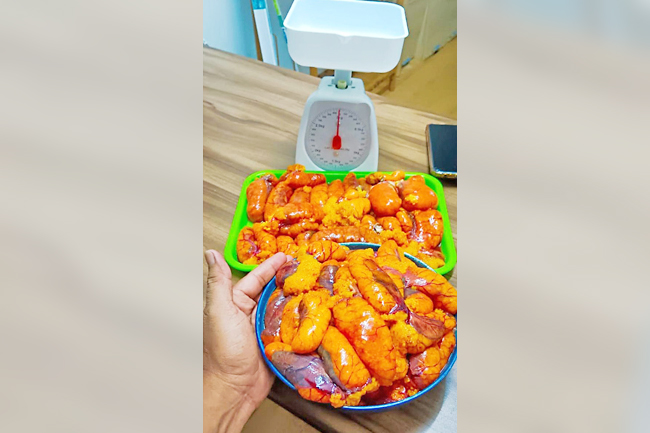
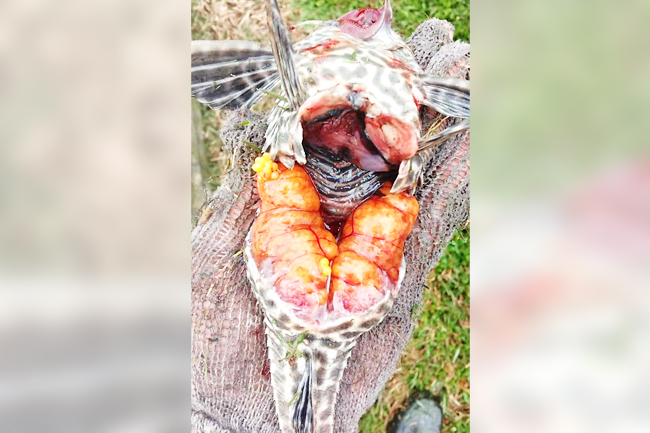
“During the Covid-19 pandemic’s movement restrictions, when we could only fish in rivers close to home, Badri and I caught absolutely nothing but bandaraya fish in the rivers near our homes,” said Mohamad Haziq, a businessman and an online content creator.
They knew it was an invasive species and thus did not practise catch-and-release, but they also did not want to leave the fish to rot in the bushes where flies would breed.
“So, we decided to gut it before throwing it into the river and we found a female with large egg roe sacs inside. The egg roes were sticky. When we cut the roe sacs to use as fresh bait, we found that the other fish were biting.
“This bait caught us a nine kilogramme African catfish at that same spot,” Mohamad Haziq said. They kept doing that and found that bandaraya fish roe made marvellous bait for freshwater bottom fishing.
Even when the roe was sliced apart, the sticky eggs held together so well that it was a cinch to bait them on the hook, and many fish could not resist swallowing them.
Mohamad Haziq and Mohd Nur Badri made a video about this bait, put it on YouTube and received 1.9 million views.
Almost overnight, fellow Malaysian anglers began pestering them for bandaraya roe as fresh bait.
They then made a second video to show everyone the A-to-Z of catching bandaraya fish using casting nets, gutting them and harvesting the egg sacs as bait. That video gained 1.6 million views.
Suddenly, the hated-yet-ignored bandaraya fish became a prized target. Groups of anglers who knew how to cast nets pleaded with Mohamad Haziq and Mohd Nur Badri to take them to rivers in Selangor and Kuala Lumpur where bandaraya fish abound.
Today, frozen bandaraya fish egg sacs are selling for above MYR60 per kilogramme. The group freezes the eggs and uses special courier services to send them in polystyrene boxes to other freshwater anglers, even in Kelantan.
“Out of maybe 100 bandaraya fish we net, only 20 to 30 are egg-bearing females. In one netting session, we catch almost 500 bandaraya fish and get no more than four kilogrammes of eggs.
“One angler will need at least one kilogramme, but there will be about 100 anglers clamouring to buy and we can only sell to four of them. So it has always been the buyer who sets the price,” said Mohamad Haziq.
But it wasn’t much of a profit-making venture. The few hundred ringgit they made soon went into solving another problem.
“With one cast of the net at a good spot, we can get 30 to 40 bandaraya fish. But when we remove the tangled fish from our casting nets, we discovered that their dorsal and pectoral fins were so sharp and jagged that our nets began to tear.
“There were so many holes that we had to buy new nets after a few trips,” Mohamad Haziq said.
Mohamad Haziq and Mohd Nur Badri now spend all their time outdoors teaching anyone who wants to learn to catch bandaraya fish.
These net-casters converge along Sungai Gombak within sight of Sogo Kuala Lumpur, Sungai Klang beside Mid Valley Megamall, Sungai Pusu at Bukit Jalil and spots along Sungai Damansara and urban stretches of Sungai Langat near Bangi.
They have been casting nets in these spots regularly since last year. Yet every time they go, even with 10 of them casting nets, they always collect 400 to 500 bandaraya fish.
“The speed at which the fish breeds is shocking. Every time we go, we net almost nothing but bandaraya fish, and although we have been doing it for over a year, we still net just as many on every trip,” mused Mohamad Haziq.
Selangor Fisheries Department director Noraisyah Abu Bakar said members of Komuniti Pemburu Ikan Bandaraya were doing a great service to the local freshwater fish ecology and urged them to keep at it.
“This is one of the most ecologically devastating fish in the world. In the Amazon River basin where they are native, there are many otters, crocodiles, caimans, eagles and giant fish like the arapaima that will feed on armoured catfish to keep their population under control.
“In Malaysia, such predators are rare, so the bandaraya fish can multiply until they gather in shoals by the hundreds,” said Noraisyah.
She explained that although such armoured fish were principally algae feeders, their habit of sucking on the beds of rivers and lakes meant that they would consume the eggs that other fish laid at the bottom.
“While they suck up the eggs of all other fish, they burrow horizontal tunnels of more than a metre deep to lay their eggs. Then the males guard the tunnels full of thousands of their eggs until they hatch.
“This is an effective breeding strategy and that is why when this alien fish is released into our waterways, they will wipe out all other species until there is no fish left there but them,” stressed Noraisyah.







